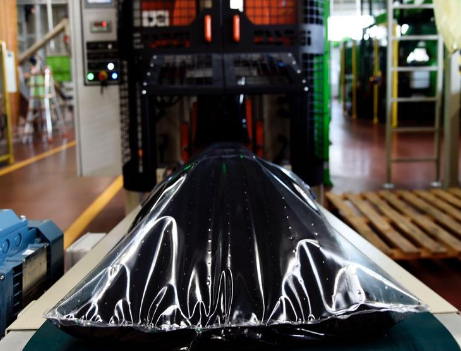Final Results
LIFE GREEN VULCAN project has made significant strides in addressing the environmental challenge posed by the recycling of vulcanized rubber, particularly from end-of-life tires (ELT). Through innovative and eco-friendly devulcanization technology, the project has demonstrated that rubber waste can be effectively reintegrated into new products, contributing to the circular economy in the automotive and tire industries.
Environmental and Industrial Context
Vulcanized rubber is notoriously difficult to recycle without compromising its quality and performance characteristics. This limitation has resulted in minimal reuse of end-of-life tires (ELT) in the production of new tires, with recycling rates of waste rubber remaining low, typically below 3% for new tire manufacturing. The automotive industry has increasingly focused on sustainability and circular practices, yet rubber, despite being one of the largest waste streams from end-of-life vehicles, has not matched the technical standards required by the industry.
Natural rubber is considered a Critical Raw Material (CRM) by the European Commission, reaffirmed in two consecutive revisions, underscoring its economic importance and the need to diversify supply sources. The EU’s stringent environmental regulations, such as the European Deforestation Regulation (EUDR), further emphasize the need for deforestation-free supply chains and prioritizing sustainable materials. The LIFE GREEN VULCAN project has addressed these challenges by offering a viable alternative through the use of recycled rubber that meets technical requirements for advanced automotive applications.

Photo: @Rubber Conversion
Key technological achievements
Devulcanized Rubber Masterbatch Production
The project successfully developed high-performance devulcanized rubber masterbatches, specifically designed for advanced technical applications. The project partners achieved significant milestones:
These products were rigorously tested for performance, durability, and aging. Both partners confirmed that the recycled rubber met all technical specifications and is ready for commercial-scale production.

SRC 450 HP material developed by Rubber Conversion.
Photo: @Rubber Conversion
Environmental Impact and CO2 Reduction
This technology represents a breakthrough in providing high-quality, sustainable raw materials from ELT for the European tire and automotive industries, helping them meet decarbonization goals.

Project Actions and Outcomes
Long-Term Perspectives and Applications
The LIFE GREEN VULCAN project has demonstrated the scalability and applicability of its innovative devulcanization technology across different sectors:
The adoption of these circular practices represents a significant step toward achieving more sustainable industrial production processes in Europe and beyond.
Conclusion
The LIFE GREEN VULCAN project has successfully addressed one of the critical challenges in rubber recycling, creating a path for the automotive and tire industries to integrate devulcanized rubber into high-performance products. The environmental and economic benefits of this technology are clear, positioning the project as a key contributor to the European Union’s sustainability goals and circular economy initiatives.



